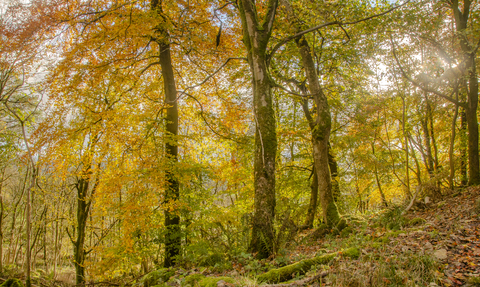Little Beck Wood Nature Reserve
Location
Know before you go
Dogs
Please be respectful of the reserve's resident wildlife.
When to visit
Opening times
Open at all times. We recommend a half day trip for this reserve, but if you want a longer outing why not visit Fen Bog, Falling Foss or Whitby?Best time to visit
March to SeptemberAbout the reserve
A lush, characterful woodland of oak, ash, alder and cherry, Little Beck Wood is split into two by Little Beck – the perfect place to see dippers and grey wagtails. Look out for woodland birds including great spotted woodpecker, marsh tit, nuthatch and treecreeper, and spotted flycatchers in summer. In spring and early summer, the woodland floor bursts into life, with wood anemone, bluebell, primrose, moschatel and early purple orchid. Can you spot badger scrapes, deer tracks and rodent holes around the site?
Habitat
Contact us
About
Primarily broadleaved woodland with a small pasture at the southern end, the site avoids the worst of the North Yorks Moors weather being situated in a secluded position at the bottom of the valley.
The nature reserve is split into two as the small river of Little Beck dissects it. Whist the majority of tree species here are oaks, ash, alder and cherry there is also an understory of hazel, holly and rowan. Both sections are rich in ground flora which sustains the healthy mammal population.
In the spring and early summer wood anemone, bluebell, primrose and early purple orchid are in full flower, whilst ferns dominate the shadier areas. Badger scrapes may be discovered around dense areas of bluebells, whilst deer tracks might be seen in the damp sections of the path and rodent holes in the banks around the site. Sightings of birds are commonplace, including the secretive treecreeper and dipper. Dead wood provides an important food source for insects, several of which are listed in the Red Data Book as being rare; these in turn support the population of birds and animals higher up the food chain.
Yorkshire Wildlife Trust has worked to maintain the woodland since taking over the lease in 1970 from the Forestry Commission and then later purchasing it in 1986. Bird boxes provide vital breeding spaces for nuthatch, tits and owls. Tree health is also a primary concern, with any diseased or damaged trees made safe with regards to the public and left as dead wood where possible. The understory is also managed to retain tree health, with the thinning of holly and coppicing of hazel. The pasture is cut for hay and grazed by neighbouring farmer’s livestock.
Seasonal highlights
- Spring: Plants - Bluebell; Wood anemone; Primrose; Early purple orchid; Dog violet
- Summer: Plants - Moschatel; Birds - Great spotted woodpecker; Spotted flycatcher
- Autumn: Fungi; Birds - Dipper
- Winter: Birds - Grey wagtail; Treecreeper
Directions
Public transport
The nearest train station is at Sleights
By car
Take either the A169 from Pickering or the B1416 from Scarborough. Turn off to the village of Littlebeck where the woodland is situated immediately south of the ford. Please park considerately in the village.
Falling Foss circular walk guide

The autumn colours were even more beautiful when the sun came out
Photo Credit - Telling our Story Volunteer, Sara




